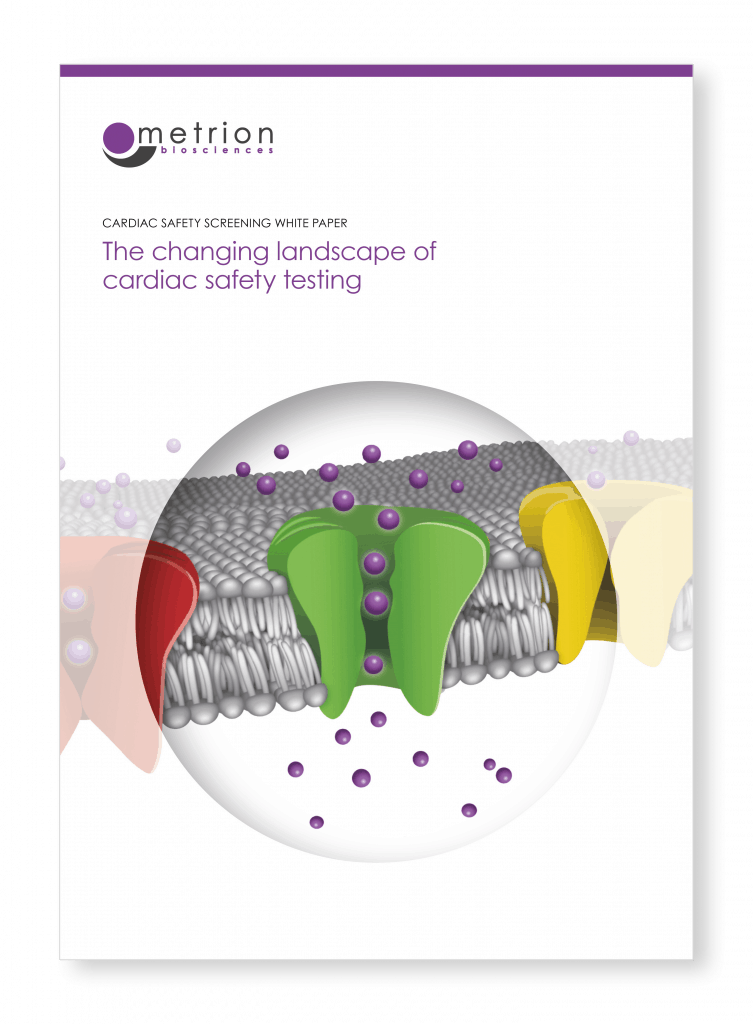The changing landscape of cardiac safety
White paper
White paper title
The changing landscape of cardiac safety
Summary
Our April 2020 cardiac safety White paper, “The changing landscape of cardiac safety’ is available to download here. This White paper summarises current cardiac safety testing guidelines and Metrion Biosciences’ involvement in creating an enhanced panel of assays aligned with future cardiac safety testing and drug regulatory requirements.
Please contact us if you would like any further information regarding our suite of cardiac safety services.
Extract
Rationale for more predictive cardiac safety assays in drug discovery
Drug discovery is an expensive and complicated process, with recent estimates of the cost of bringing each new drug successfully to market of $1-$2 billion. Implicit in these calculations are the cost of failed drug candidates, which, in industry surveys over the last two decades (Arrowsmith & Miller 2013; Hay et al., 2014; Cook et al., 2014), is attributed firstly to lack of efficacy (~50% of failed compounds) followed by safety issues (~30% of failed compounds). Significantly, cardiac toxicity remains the leading cause of new drug safety side effects (Valentin & Redfern, 2017). Drug attrition due to cardiotoxicity occurs in all phases of drug development (Fig. 1), and the later it occurs the greater the out-of-pocket cost.
What is apparent from these industry surveys is that existing pre-clinical cardiac safety assays that rely on in vitro, ex vivo and in vivo animal models are not sufficiently reliable in predicting the human cardiac risk of new compounds being tested in clinical trials or approved for marketing (red arrow, Fig. 1). Given the ongoing poor predictability of existing cardiac safety testing regimes, industry and regulatory groups across the globe have initiated efforts to improve the translational potential of cardiac safety assays. One key aspect of this is to reduce reliance on animal tissues and models derived from different species. This is because there are key species differences in cardiac physiology, as well as a growing commitment in industry to meet recommended guidelines for reducing animal testing. Three general approaches have been proposed to improve the predictability of future cardiac safety assays, all of which have been successfully implemented at Metrion Biosciences:
- Include additional human cardiac ion channels for in vitro screening panels to capture the full cardiac risk profile of test compounds;
- Use high quality in vitro data in sophisticated in silico models of the human cardiac action potential (AP) to predict arrhythmias, and;
- Test compounds empirically, and confirm the arrhythmia predictions of in silico models, using translational models employing human induced pluripotent stem cell-derived cardiomyocytes (iPSC-CMs).
Other recommended publications
White papers
Application notes


Let’s work together
What are your specific ion channel and assay needs?
If you have any questions or would to like discuss your specific assay requirements, we will put you directly in touch with a member of our scientific team. Contact us today to discover more.

